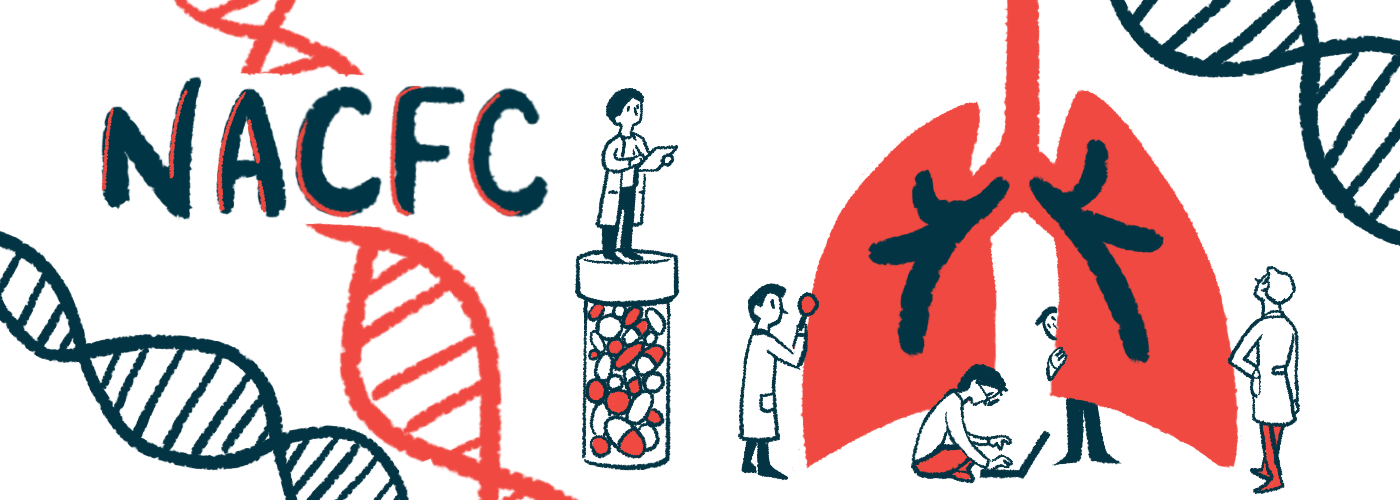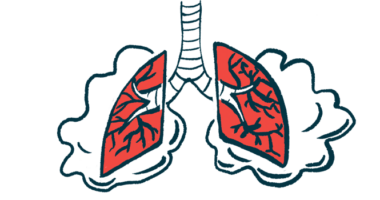#NACFC2021 – Gene Therapy SP-101 Shows Potential in Animal Study

Treatment with SP-101, an investigational gene therapy that Spirovant Sciences is developing for people with cystic fibrosis (CF) who are unable to benefit from current treatments, effectively increased CFTR gene activity in a ferret model of the disease, the company reported.
Katherine Excoffon, PhD, Spirovant’s vice president of research, presented the data at the 2021 North American Cystic Fibrosis Conference (NACFC). Her talk was titled, “Delivery of SP-101 restores CFTR function in human CF airway epithelial cultures and drives hCFTRΔR transgene expression in the airways of ferrets.”
Cystic fibrosis is caused by mutations in the gene CFTR, which codes for a protein of the same name. The CFTR protein functions like a gate on the surface of cells, helping to control the movement of water and salt molecules in and out of the cell; in CF, mutations in CFTR lead to the production of a protein that doesn’t function properly.
Recently, a class of CF treatment called CFTR modulators has become widely available. These medicines work by increasing the functionality of the CFTR protein in people with specific mutations — but as many as 1 in 5 CF patients do not benefit from them, according to Spirovant.
SP-101 is an inhaled gene therapy that aims to deliver a miniature, but working, version of the CFTR gene to cells, thus allowing them to produce working CFTR protein. Importantly, this mechanism of action means that the therapy is expected to work similarly in all people with CF, regardless of what specific mutation they carry.
The investigational therapy is designed to deliver its genetic payload using a specially modified version of an adeno-associated virus (AAV), which is commonly used in gene therapies because it is safe and easy to manipulate in a laboratory.
The specific version of AAV in SP-101 is engineered to be particularly effective at delivering its genetic cargo to “many different epithelial [airway] cells that would be important for correction for people with cystic fibrosis,” Excoffon said.
Experiments in airway cells from CF patients showed that the gene therapy can effectively increase CFTR function, and to levels similar to what’s seen in non-CF cells. Importantly, the therapy was most effective when given in concert with doxorubicin, a chemotherapy thought to increase the efficiency of AAV’s delivery of genetic material to cells.
To test SP-101 in vivo (in living animals), the team used a ferret model of CF, which is known to emulate many of the disease features found in humans. The animals were given different doses of SP-101, with or without doxorubicin, inhaled using a nebulizer.
Results showed that treatment led to robust expression (activity) of the miniature CFTR gene, particularly in lung tissue. Higher expression was seen with higher doses of SP-101, and the expression was 16 to 17 times higher with the co-administration of doxorubicin.
As of yet, the addition of the chemotherapy has not caused any obvious safety problems, Excoffon said, though she noted that these are early experiments and that further toxicology studies are ongoing.
Notably, CFTR expression was evident as soon as two weeks after treatment. By 12 weeks after treatment, the latest timepoint tested, there was a slight trend towards decreasing expression, but levels did not significantly change.
Collectively, these data indicate that SP-101 can increase CFTR expression in a manner that’s “both dose-responsive and durable,” Excoffon said.
Importantly, SP-101 with doxorubicin showed similar ability to increase CFTR expression in ferrets with or without CF, which suggests that the therapy’s efficacy is not affected by thick mucus in the airway that’s typical of CF.
“SP-101 holds great promise for people living with cystic fibrosis,” Excoffon concluded.
Editor’s note: The Cystic Fibrosis News Today team is providing coverage of the virtual 2021 North American Cystic Fibrosis Conference (NACFC) Nov. 2–5. Go here to see the latest stories from the conference.








